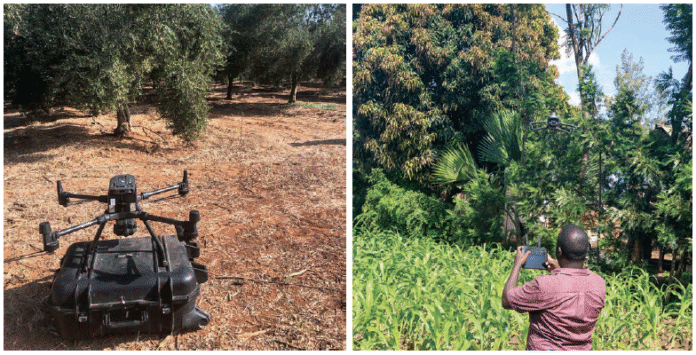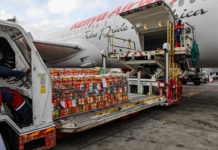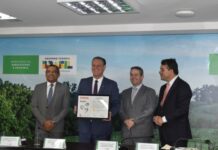Precision Agriculture has a relatively recent history in Africa, with research efforts beginning in the early 2000s, decades later than in the global North. In its early stages, PA research in Africa was received with some skepticism on its feasibility particularly in sub-Saharan Africa (SSA), given the anticipated implementation challenges. While research and application have increased, adoption remains low. Research and implementation are also concentrated within a few countries, namely, South Africa, Nigeria, Kenya, and Niger (Nyaga et al., 2021), where most precision agriculture-related startups are also based.
Precision Agriculture is defined as a management strategy that gathers, processes and analyzes temporal, spatial and individual data and combines it with other information to support management decisions according to estimated variability for improved resource use efficiency, productivity, quality, profitability and sustainability of agricultural production (ISPA, 2019). Precision Agriculture implementation in Africa contrasts significantly to that in the global North, where adoption is more widespread and technologically advanced. In the global North, PA commonly involves high-resolution data from satellites and drones, variable-rate fertilizer application, yield monitors, and sensor-based weed management systems. These tools support fine-tuned management practices that optimize input use and improve productivity. In contrast, application of advanced PA technologies in Africa is generally rare and mainly limited to countries with stronger socio-economic and technological infrastructure.
However, there are some notable adoptions of PA technologies in Africa. These include yield monitoring, variable-rate lime application, and auto-guidance systems in South Africa; improved irrigation efficiency in fruit farming in parts of Southern and Eastern Africa; weather and pest forecasting; digital agronomic advisories; and micro-dosing of fertilizer and manure in the Sahel. These cases highlight the potential of PA to support improved productivity and resource use efficiency in Africa, despite broader constraints to widespread adoption. Rising labor costs and shortages in agriculture, strong Rol from yield optimization and reduced waste, government subsidies and smart farming initiatives, and integration of Al, IoT, and imaging in harvesting equipment are the key factors driving the growth of the market According to MarketsandMarkets The global precision harvesting market is estimated to be valued at USD 29.79 billion by 2030, up from USD 21.52 billion in 2025, at a CAGR of 6.7% during the forecast period. Several important factors are driving the strong growth of the precision harvesting market. As wages and farm hand labor increase, more farmers are choosing to rely on robots for harvesting. Besides, using AI, the Internet of Things (IoT), and imagery in agriculture is making sure crops give more and that leftovers from harvest are low, generating more profit for the business. Assistance and new campaigns from the government are pushing more farmers to adopt advanced farming technologies. However, the high price of automated harvesting machines prevents many people from taking advantage of them.
On top of that, in some areas, weak online services, worries about sharing data, and incompatible systems are blocking the use of blockchain in agriculture. The software segment is projected to register the highest CAGR within the precision harvesting market during the forecast period; driven by up-to-date analysis, smart production processes, and sound choices, which are important, this industry is growing. Yield monitoring, field mapping, data analytics, and machine learning technology are now helping farmers to plan and control their harvests effectively.
By bringing together crop health, soil statistics, and weather predictions on the same platform, these tools make farm harvesting more accurate and help farmers reduce crop loss. The rising adoption of cloud-based farm management software, subscription-based services, and mobile applications is also boosting accessibility for small and medium-sized farms. Also, using AI and IoT on these systems increases their ability to predict problems and automate tasks.
Companies such as Trimble (US), Raven Industries (US), and Hexagon Agriculture (Sweden) are leading the way with full software suites for precision farming. As more farmers realize that technology can improve their farming methods and resource use, demand for precision harvesting software is set to drive its growth within this part of the market. Horticulture is expected to hold the second-largest share of the application segment in the precision harvesting market during the forecast period.
The rising global demand for fruits, vegetables, and other valued crops is behind this growth. Horticulture produce does not grow on a large scale; hence, precision is very important, which makes robotic arms, vision machines, and automated harvesters very useful for harvesting. With these technologies, the harvesting process causes little harm to the produce and keeps the result uniform and top-quality. Due to rising labour rates and fewer skilled workers, horticultural industries now depend more on precision harvesting.
For this reason, farmers use smart machines and updated harvesting technology to increase their productivity. Both governments and businesses invest in research, creating harvesting solutions that work for each crop, further encouraging farmers to adopt these technologies. Europe and North America have already started to bring these technologies into their greenhouse and open-field horticulture systems. Higher awareness, better technology, and demand for fresh goods will make horticulture a major player in driving the growth of the precision harvesting market.
Precision Agriculture is essential for achieving significant improvements in crop productivity within Africa’s predominantly smallholder, rainfed farming systems. Crop production in these systems is often characterized by suboptimal yields, and large gaps between actual and attainable yields (www.yieldgap.org). These yield gaps are driven by poor soil fertility, nutrient mining, inadequate crop management, and unbalanced fertilizer recommendations, all compounded by high variability in crop responses to inputs. Addressing these constraints is a prerequisite for achieving sustainable crop productivity intensification. PA offers targeted solutions for intensification, enabling efficient use of inputs through improved agronomic practices, site-specific management, and decision-support tools.
Technologies such as yield and soil mapping support the delineation of management zones, while variable rate application ensures nutrients are applied precisely, where, and when needed. Furthermore, PA can enhance extension services by leveraging mobile technologies to provide real-time, localized guidance on planting, input use, pest and disease alerts, and weather forecasting. Given the widespread use of mobile phones in Africa, digital PA tools present an opportunity for scalable dissemination of customized advisories. This can lead to improved input efficiency, higher yields, reduced environmental impact, and enhanced farm profitability, contributing to broader development goals such as poverty reduction and food security. Indeed, the African Union has identified the adoption of PA as vital in realizing the vision of ‘the Africa we want-no hunger, no poverty and global peace and harmony.









[…] Read more on Farmers Review Africa […]
Comments are closed.